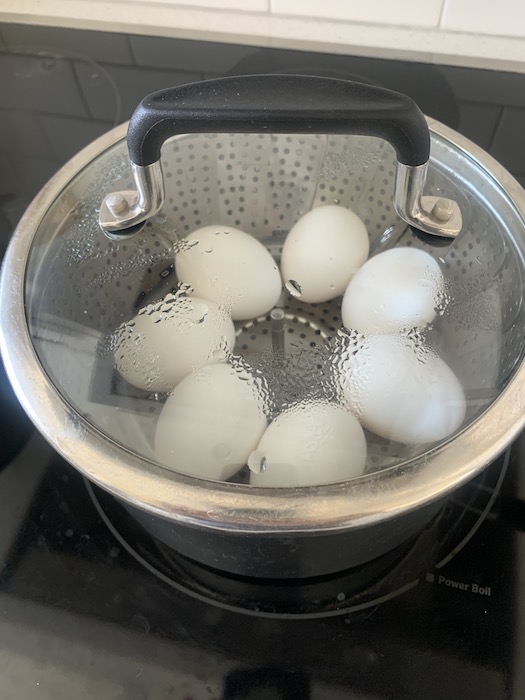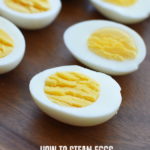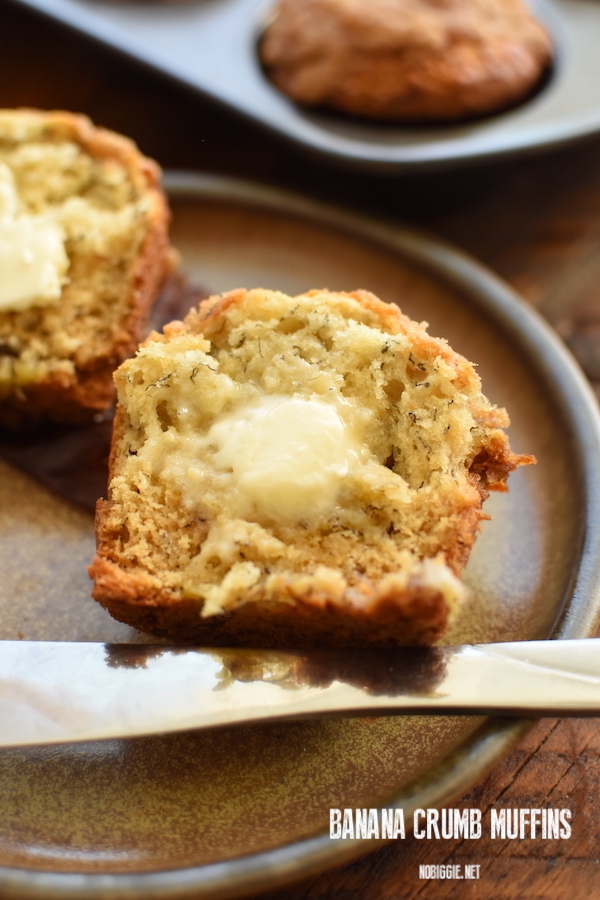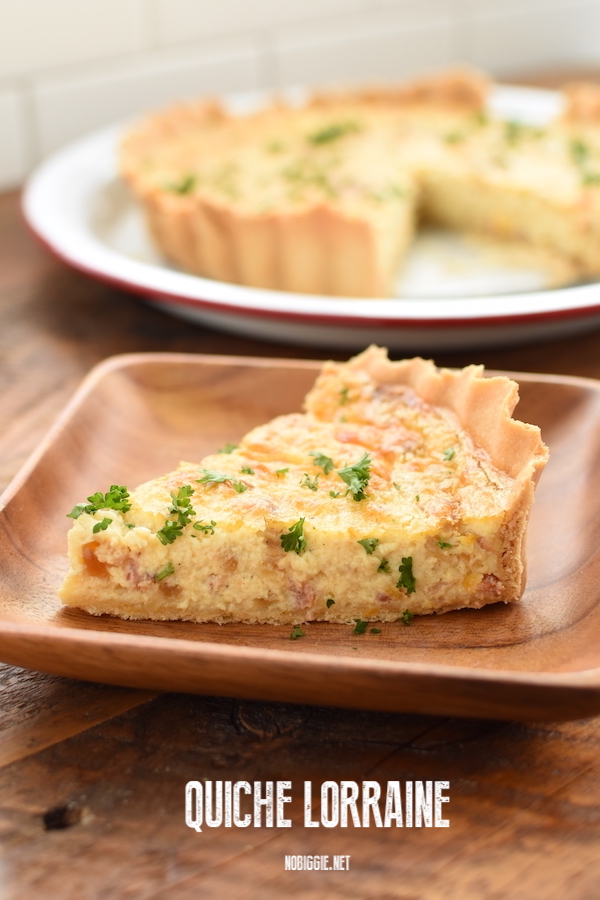How to Steam Eggs

We love to keep hard boiled eggs in the fridge for a quick grab and go protein snack. Whether it’s for the morning or in the afternoon, they are always great. If you’ve never tried steaming eggs (rather than boiling them), you must try it…it’s such a great way to make hard boiled eggs in less time. Probably the best thing about this cooking method is how easy they are to peel!
Steamed vs. Hard Boiled:
- When you steam, you use less water.
- With less water to come to a boil, they actually cook in less time.
- The peels come off so much easier.
- The eggs are more tender and they cook more evenly.
What you need to steam eggs:
- eggs
- water
- small to medium sized pot with lid that fits
- steamer basket to fit inside the pot
- two bowls of chilled ice water (for after steaming).

How to steam eggs:
- Add 1-1/2 inches of water to the bottom of the pot.
- Place the steaming basket into the pot. Make sure the lid to the pot fits securely with the steaming basket inside.
- Place the uncooked eggs into the steamer basket.
- Set a timer to 15 minutes.
- Bring the water to boil.
- Let the eggs cook in the steam until desired doneness.
- When ready, move the cooked eggs to the bowl with ice water to cool down and stop the cooking process.
- We like to have two bowls of chilled ice water (for after steaming). One for the eggs to chill in and one to peel the eggs in. We find that the eggs are even easier to peel in the chilled water. Plus the cold water makes the hot eggs easier to handle.
Variations:
Cooking times will vary depending on the size of the eggs, the altitude of where you live, the temperature of the eggs before cooking, and your personal preference of egg doneness.
How long should you steam eggs?
The level of doneness for hard boiled eggs is up to your preference. It’s a good idea to figure out how long it takes your cook top to bring the water to a boil, this way you can know how long you want to keep them steaming.
- For Runny Yolks: steam 6-8 minutes cook time
- For Almost set: steam 9-11 minutes
- For Fully Cooked Thru: steam 13-15 minutes (officially hard boiled)

Peel Steamed Hard Boiled Eggs:
- Let them cool in the bowl of ice water for a minute or two.
- Working one egg at a time. Gently bump the egg on the countertop to crack the egg on each end. I like to do this on a clean kitchen towel to absorb the wetness from the shell. Press and Roll the egg on the towel to crack the egg on all sides.
- Move the egg into the second bowl of chilled ice water and peel the egg shell off the egg under the water. The shell will come off easily!
- Fully cooked eggs will keep in the fridge for one week.

How to avoid overcooking and the green ring around the egg yolk:
If you overcook your eggs, they can get a grayish-green outer layer around the egg yolk. To avoid this from happening, just don’t over cook, use a kitchen timer to keep track of how long the eggs are cooking.
Also move the eggs to ice water immediately after steaming to stop the cooking process.

How to Steam Eggs
The best way to the perfect hard "boiled" egg is steam!
Ingredients
- 5-8 large eggs
Instructions
-
Add 1-1/2 inches of water to the bottom of the pot.
-
Place the steaming basket into the pot. Make sure the lid to the pot fits securely with the steaming basket inside.
-
Place the uncooked eggs into the steamer basket.
-
Set a timer to 15 minutes.
-
Bring the water to boil.
-
Let the eggs cook in the steam until the timer goes off or earlier...to desired doneness.
-
When done, move the cooked eggs to a bowl with ice water to cool down the eggs and stop the cooking process.
-
We like to have two bowls of chilled ice water (after steaming). One for the eggs to chill in and one to peel the eggs in. We find that the eggs are even easier to peel in the chilled water. Plus the cold water makes the hot eggs easier to handle.
Recipe Notes
Cooking times will vary depending on: the size of the eggs, the altitude of where you live, the temperature of the eggs before cooking and your personal preference of egg doneness.
Steam an additional egg - one to test for doneness. If it is good, then they are all good, if it's not ready, then keep cooking the rest.
Making This Recipe? Tag us on Instagram: @NoBiggie using the hashtag #NoBiggieRecipes, so we can see what you are making in the kitchen!
Favorite Ways to use Steamed Hard-cooked Eggs:
- classic deviled eggs
- Loaded Deviled Eggs
- Bacon and Blue Cheese Deviled Eggs
- potato salad
- Cobb Salad
- Wedge Salad
- Egg Salad Sandwich







